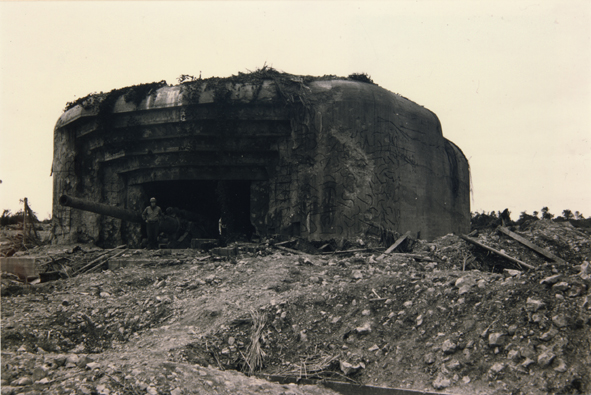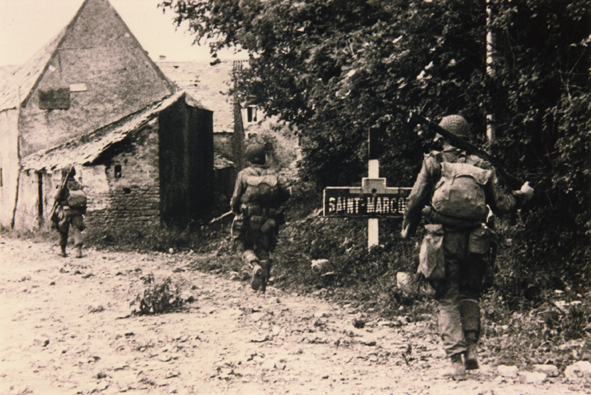- Museum
- Crisbecq Battery, Saint-Marcouf, France
- http://www.batterie-marcouf.com/
- +33 (0)6 68 41 09 04 contact@batterie-marcouf.com
The Saint-Marcouf (or Crisbecq) artillery battery played a major role during the D-Day landings on 6 June 1944, as it challenged the Allied fleet in front of Utah Beach and offered resistance to the progress of American forces. The museum enables visitors to discover how the defence of the German army along the ‘Atlantic Wall’ was organised.
During the occupation of France, the German Navy set up a huge 4 x 210 mm gun battery in Crisbecq, a small village located in the Saint-Marcouf district.
This battery represented a real danger for the ships transporting American troops to the Utah Beach landing areas. For that reason it was heavily bombarded by Allied aircraft in the early days of spring 1944, as well as in the night of 5 June.
Yet, the battery suffered little damage and, in the morning of 6 June, it opened fire on the Allied naval forces. In the ensuing artillery battle the fleet soon got the upper hand.
Then, German forces aimed their remaining operational cannon towards the Utah Beach seashores. In the morning of 7 June, many American soldiers from the 22nd Infantry Regiment (4th Division) died in a vain attempt to take the German position.
The 400 German soldiers commanded by the Oberleutnant zur See (naval lieutenant) Walter Ohmsen stubbornly resisted the assaults of the American ground troops and paratroopers. The German garrison finally withdrew in the night of 11 June.
Since 2004, a museum located on the site of the German battery has been open to the public. Inside, visitors will discover a number of fortified buildings, typical of the Atlantic Wall shelters which could accommodate soldiers, anti-aircraft cannon, machine guns, but also a kitchen or a nursery.
Though the guns have been removed, visitors can discover a wealth of war items, weapons and uniforms enabling them to visualize the living conditions of German soldiers before the Allied landings.



